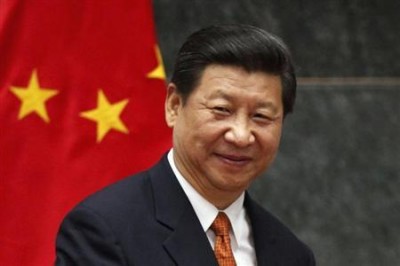China’s “Xi Silk Road” Is Here to Stay
Xi's extended tenure could embody the guarantee China needs to continue its anti-corruption purge and guide the ongoing economic reorientation

It took only two sentences for Xinhua to make the historical announcement; the Central Committee of the CCCP “proposed to remove the expression that ‘the president and vice-president of the People’s Republic of China shall serve no more than two consecutive terms’ from the country’s constitution.”
That will be all but confirmed at the end of the annual National People’s Congress session starting next week in Beijing.
A Made in the West geopolitical storm duly ensued; forceful condemnations of the “regime” and its “authoritarian revival,” across-the-spectrum demonization of the “dictator for life” and “the new Mao.” It’s as if the New Emperor was about to concoct the imminent launch of a Great Famine, Cultural Revolution and Tiananmen combo.
Now compare the hysteria with renowned Renmin University professor of International Relations Shi Yinhong, who attempted to introduce a measure of realpolitik:
“For a long time into the future, China will continue to move forward according to Xi’s thoughts, his route, his guiding principles and his absolute leadership.”
The global economy’s captains of industry, old and new, have better shark fin to consume than to be constrained by the lowly Western Politician game of demonizing China. Turbo-capitalism – with or without “Chinese characteristics” – has absolutely nothing to do with Western liberal democracy. The Little Helmsman Deng Xiaoping introduced a real “third way”: economic proficiency coupled with political control. Deng, by the way, learned the ropes from Singapore strongman Lee Kuan Yew – a darling of the West.
Xi may embody the guarantee China needs to carry out, as smoothly as possible, a much-needed anti-corruption purge sidelining the many rotten branches of the CCP while steering a much needed economic reorientation that should benefit, most of all, the rural proletariat.
Besides, Xi is already leading internationally in climate change, nuclear proliferation, not to mention realigning global trade as globalization 2.0.
And that brings us to childish Western attempts to deride the New Silk Roads, known as the Belt and Road Initiative (BRI) as “overblown,” coupled with claims that BRI is facing a “global backlash.” That barely qualifies as wishful thinking.
What’s happening in the real world is that the Trump administration is trying to engineer an anti-BRI via the Quad (US, Japan, India, Australia) – but without BRI’s transnational and transcontinental appeal, not to mention funding.
Japan is making noises about a $200 billion Afro-Asian counterpunch. India centers its offensive on a deal with Iran to have Chabahar port compete with Gwadar. The Turnbull administration in Australia, in its 2017 Foreign Policy White Paper, bets on engaging the US against China. And Admiral Kurt Titt, the head of Southcom, carps, among other military officers, that BRI is a threat to US influence.
Xi, as well as Russian leader Vladimir Putin, has identified very clearly which way the wind is blowing, with Washington treating both China and Russia as “revisionist powers” and a certified strategic threat.
The Tang dynasty meets Plato
Xi may now turn into a post-modern version of an enlightened Tang emperor. But he also performs as the embodiment of Plato – a philosopher-king ruling with help of the best and the brightest (think Liu He, director of the Office of the Central Leading Group for Financial and Economic Affairs and Xi’s top man on economic policy).
The CCP as Plato’s Republic has concluded that yes, it’s all about management. China’s titanic tweaking of its economic model simply cannot be accomplished at least before 2030. Challenges include managing the transition of state-owned enterprises (SOEs); the move towards added value GDP growth; how to organize China as a major consumer society; and how to contain the spread of financial risks.
For all these, consistency and continuity is key.
Xi has all but announced his major moves. The Chinese Dream – or China as a stable, middle-income nation. BRI as a connectivity vector integrating not only Eurasia but also Africa and Latin America. The increasing influence of the Asian Infrastructure Investment Bank as well as the Shanghai Cooperation Organization. Securing the South China Sea as well as increasing a presence not only across the Indian Ocean but all the way to the Third Island – a matter of protecting China’s connectivity/supply lines.
And last but not least, China configured as the top power in either Asia-Pacific or “Indo-Pacific.”
History will judge Xi by his deeds. The rest is mere Sinophobia.

